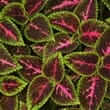Background
- Coleus species have been used in the Asian traditional medicine to treat angina, asthma, bronchitis, epilepsy, insomnia, skin rashes, and a wide range of digestive problems. Since the 1970s, research was predominantly concentrated on forskolin, a root extract of Coleus forskohlii. Early study suggests that forskolin may have clinical use in treating heart, lung and eye conditions.
- Although most studies have used the isolated forskolin extract, it is believed that the whole coleus plant may be more effective, due to the presence of multiple compounds that may act synergistically. Generally, coleus appears to be well tolerated with few adverse effects.
References
Natural Standard developed the above evidence-based information based on a thorough systematic review of the available scientific articles. For comprehensive information about alternative and complementary therapies on the professional level, go to . Selected references are listed below.
- al Sereiti MR, Abu-Amer KM, Sen P. Pharmacology of rosemary (Rosmarinus officinalis Linn.) and its therapeutic potentials. Indian J Exp Biol 1999;37(2):124-130.
View Abstract - Almeida FC, Lemonica IP. The toxic effects of Coleus barbatus B. on the different periods of pregnancy in rats. J Ethnopharmacol 2000;73(1-2):53-60.
View Abstract - Bersudsky Y, Kotler M, Shifrin M, et al. A preliminary study of possible psychoactive effects of intravenous forskolin in depressed and schizophrenic patients. Short communication. J Neural Transm 1996;103(12):1463-1467.
View Abstract - Bryld LE. Airborne contact dermatitis from Coleus plant. Am J Contact Dermat 1997;8(1):8-9.
View Abstract - Cahn D, Melman A, Valcic M, et al. Forskolin: a promising new adjunct to intracavernous pharmacotherapy. J Urol 1996;155(5):1789-1794.
View Abstract - Hayashida N, Chihara S, Tayama E, et al. Antiinflammatory effects of colforsin daropate hydrochloride, a novel water-soluble forskolin derivative. Ann Thorac Surg 2001;71(6):1931-1938.
View Abstract - Ishikawa Y. Isoform-targeted regulation of cardiac adenylyl cyclase. J Cardiovasc Pharmacol 2003;41 Suppl 1:S1-S4.
View Abstract - Maeda H, Ozawa H, Saito T, et al. Potential antidepressant properties of forskolin and a novel water- soluble forskolin (NKH477) in the forced swimming test. Life Sci 1997;61(25):2435-2442.
View Abstract - Maeda N, Tamagawa T, Niki I, et al. Increase in insulin release from rat pancreatic islets by quinolone antibiotics. Br J Pharmacol 1996;117(2):372-376.
View Abstract - Mei SX, Jiang B, Niu XM, et al. Abietane diterpenoids from Coleus xanthanthus. J Nat Prod 2002;65(5):633-637.
View Abstract - Mulhall JP, Daller M, Traish AM, et al. Intracavernosal forskolin: role in management of vasculogenic impotence resistant to standard 3-agent pharmacotherapy. J Urol 1997;158(5):1752-1758.
View Abstract - Tewtrakul S, Miyashiro H, Nakamura N, et al. HIV-1 integrase inhibitory substances from Coleus parvifolius. Phytother Res 2003;17(3):232-239.
View Abstract - Wajima Z, Shiga T, Yoshikawa T, et al. Effect of prophylactic bronchodilator treatment with intravenous colforsin daropate, a water-soluble forskolin derivative, on airway resistance after tracheal intubation. Anesthesiology 2003;99(1):18-26.
View Abstract - Yanagihara H, Sakata R, Shoyama Y, et al. Rapid analysis of small samples containing forskolin using monoclonal antibodies. Planta Med 1996;62(2):169-172.
View Abstract - Yousif MH, Thulesius O. Forskolin reverses tachyphylaxis to the bronchodilator effects of salbutamol: an in-vitro study on isolated guinea-pig trachea. J Pharm Pharmacol 1999;51(2):181-186.
View Abstract







